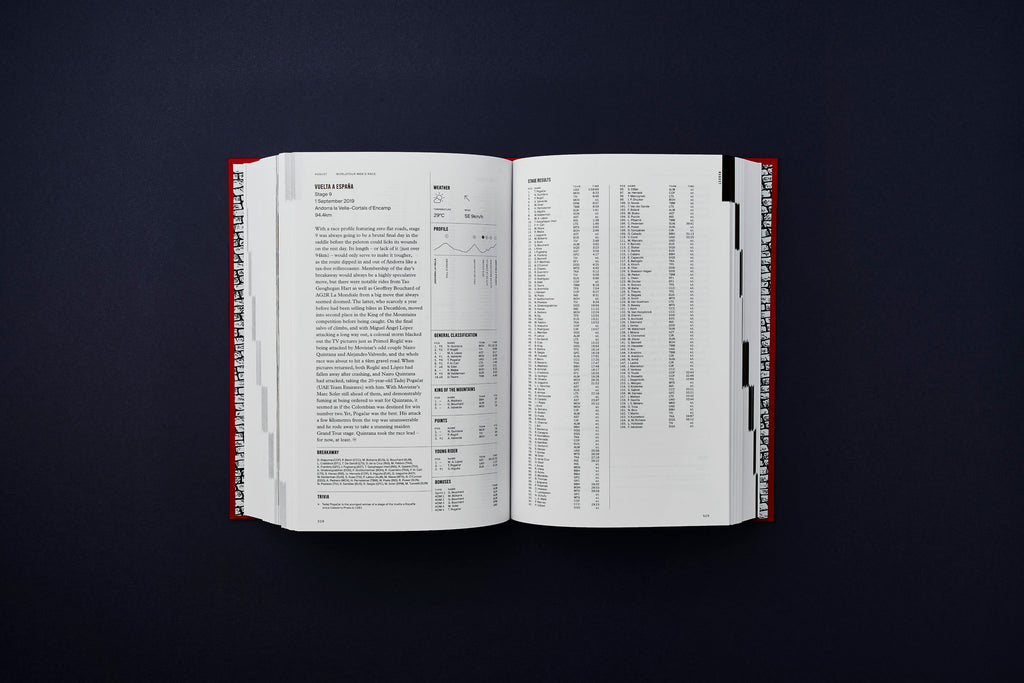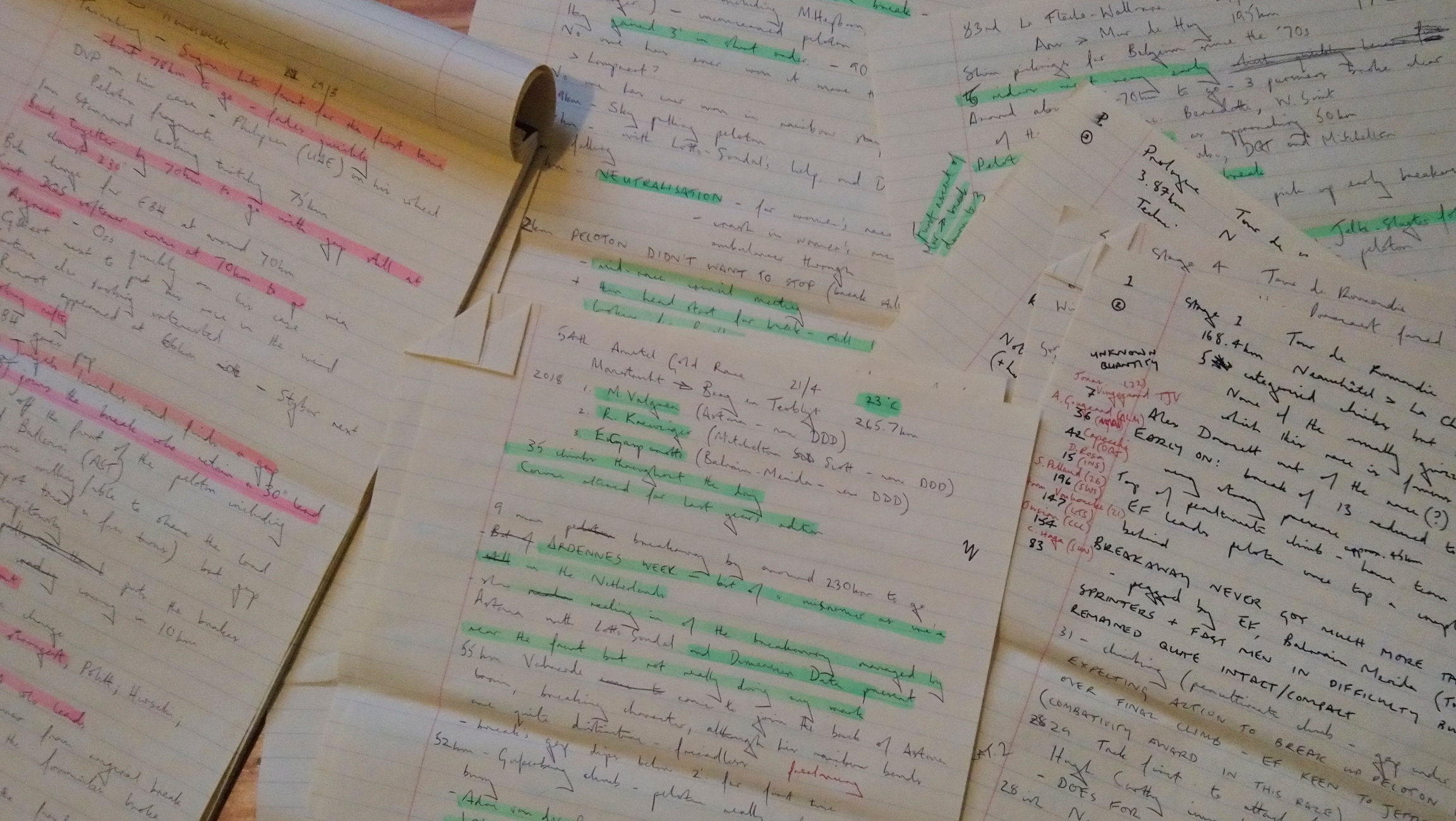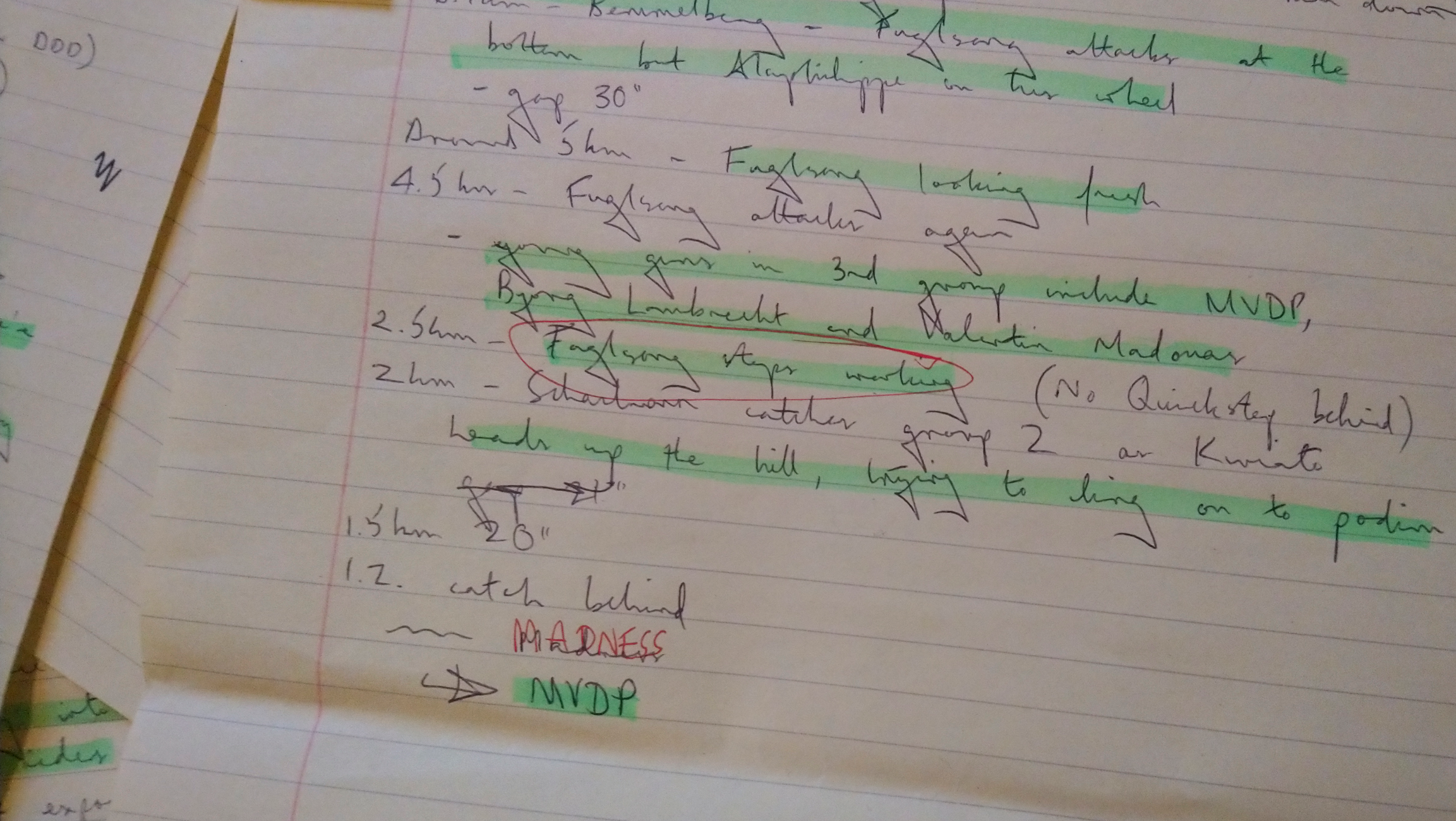The Silent Commentator Inside My Head- Kit Nicholson

 Back in January I was thrilled to be asked by Ned to contribute 21 race reports to the Road Book 2019. I was able to choose a range of races from one-day Classics to week-long stage races, kicking things off with E3 Harelbeke in March and ending with Cyclassics Hamburg at the end of August. This meant I’d be covering riders of all shapes and sizes, ages and experience, over varied terrain and in races of dramatically varying character.
Back in January I was thrilled to be asked by Ned to contribute 21 race reports to the Road Book 2019. I was able to choose a range of races from one-day Classics to week-long stage races, kicking things off with E3 Harelbeke in March and ending with Cyclassics Hamburg at the end of August. This meant I’d be covering riders of all shapes and sizes, ages and experience, over varied terrain and in races of dramatically varying character.
Race days would find me tuning into the Eurosport feed as soon as commentary started (occasionally a Belgian Classic would have a live feed set up before the commentators could take their seats, but from memory this is fairly rare). Hardly anyone gets to see the first passages of play in a bike race. Typically, you can expect to miss up to around 100km, depending on the race. Usually, this is not really an issue, but every so often something happens that serves as an important preface to the action; for instance, that haphazard neutralisation at Dwars door Vlaanderen on April 3rd.
After about the first hour – sometimes more, sometimes less, but at some stage nonetheless – I’d mute the commentary. Strange decision? Maybe. But I have a very good eye for identifying pros in the WorldTour and a pretty well tuned gauge of the ProConti level too, and I preferred to read the race with my own eyes. I would unmute if there was a big crash or if there was an in-screen interview, but ordinarily, I’d wait until the finale to fill my ears with voices again. This way, I felt that I could begin to feel around for the story before getting down to writing, not to mention the playful indulgence of the silent commentator inside my head.

As for notes, I’d record copious scribbles on one of those yellow legal pads that populate Hollywood movies – you know the ones, gummed at the top edge, often wielded by journalists, reporters, writers, whistleblowers in a typical awards season movie. I’d make a note of start and finish towns, the reigning champion, the parcours (e.g. number of climbs) and the weather, just in case it proved significant. If I was feeling particularly organised or it was a particularly big race, I’d have looked through the startlist and highlighted anyone who was on a roll – Alaphilippe, Roglič – or who I’d be keeping my eye on, just cos – van der Poel, Evenepoel… Then once racing got underway, I’d await the establishment of a breakaway, which I’d jot in the margin, before settling in and waiting for the real action to start.
I wrote down everything, every probing attack, every last-ditch effort from the breakaway, every unfortunate puncture for a favourite, every minor touchdown. My pages would be littered with bib numbers by the end of the race, neater, clearer and quicker than scrawled names in handwriting that even I can hardly read at the best of times. Tidying up, deciphering my hieroglyphics, would come later.

The challenge in putting together race reports is not in the writing necessarily, nor in the information gathering, i.e. watching the races. The challenge is synthesising sometimes over 250km of drama, the leading characters innumerable, and packaging it up into a bitesize story that is at least a little more than a systematic recounting of events. I’d always wait a couple of weeks before returning to my notes, allowing for the race to compost down in my mind, leaving only the most important details around which to tell the story. Then I had to work out how to go about it. Play-by-play? Or pick out a theme or detail and get creative? This was more or less decided for me by the races themselves: Dwars door Vlaanderen had action from beginning to end; Amstel Gold Race had an inbuilt story of family, patriotism and downright heroics.
Condensing my notes down to around 300 words was not as hard as I at first thought, though I did have to cut swathes of defiant names from the record from time to time, which could be a little painful. Getting across the action was of course the priority, but it was important to me that my reports should convey an element of character, colour, atmosphere. As Russ Ellis pointed out last week, it’s the raw personal details, the suffering and emotion that we’re all here for after all.

Leave a comment